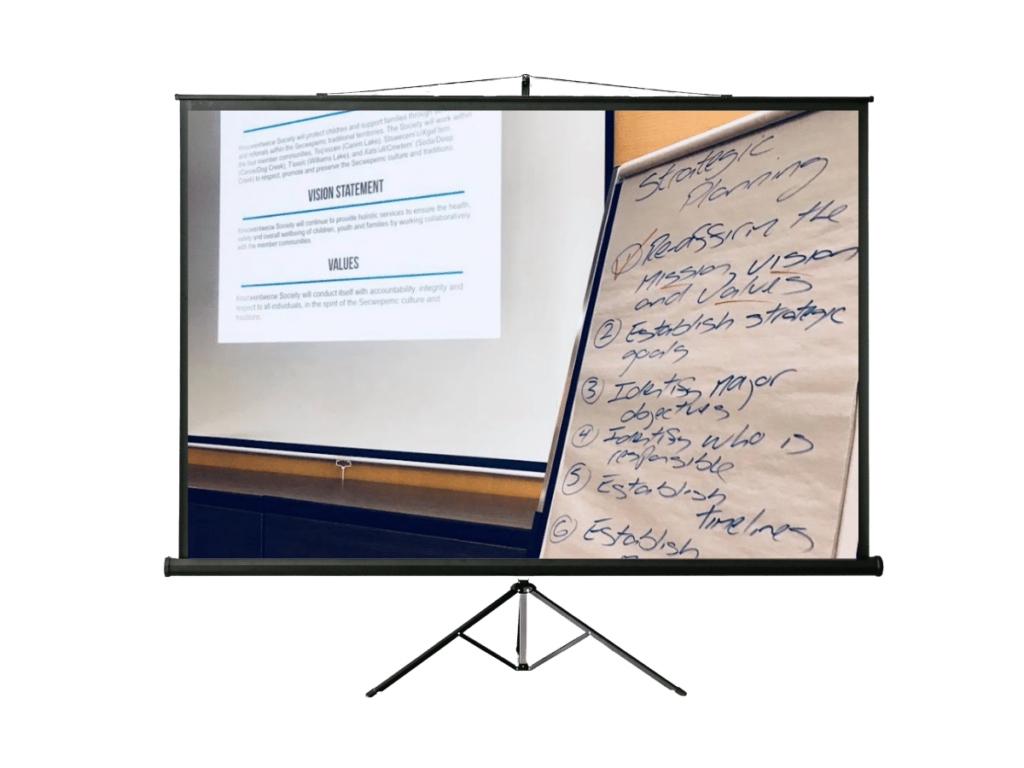If you have questions about strategic planning such as, “how should we arrange? who needs to get involved? what should we cover?” this episode of the Strategic Nonprofit Podcast is for you. So, join host Trista as she meets with the CEO of AMC NPO Solutions, Tom Abbott, to discuss the nonprofit strategic planning process.
Also read:
- The Ultimate Guide to the Nonprofit Strategic Planning Process
- 3 Essential Committees and Task Forces For Nonprofits
- Consensus Decision Making For Your Board
What is nonprofit strategic planning?
Strategic planning is the leadership function of articulating why an organization exists. Consequently done by setting strategic goals that will enable the organization to move towards fulfilling its reasons for existence. It also includes establishing time phase plans that will identify measurable results for meeting those strategic goals and determining who’s responsible for them.
Why is strategic planning important?
Corporate stakeholders markedly measure success by looking at the profit generated by publicly traded companies. As a result, the measurement of success links to the share price of the firm’s stock. But in NPOs, there’s no share price or profit. That’s because it’s not the purpose of the organization. So success measurement methods standard in the corporate world is both unusable and inappropriate. As a result, strategic planning is vital for governing, managing, and monitoring an NPOs performance.
How is the strategic plan created?
In general, whatever method you use to complete your strategic plan can vary. However, regardless of the method, the roles of the board and the staff are generally constant. That’s also why you need to start strategic planning by looking at what your board, staff and CEO should be doing and comparing it to what they are doing.
What’s the role of the board of directors?
- Making the time available for a face-to-face planning session or sessions.
- Defining and formally approving the mission statement.
- Defining and formally approving the strategic goals.
- Providing input to staff regarding NPO shorter-term objectives that will support the longer-term strategic goals. (As time permits)
- Approving the strategic plan developed by staff and presented to the board.
What’s the role of the CEO and senior staff?
- Handling all logistics of the face-to-face planning meeting(s).
- Completing any advance research work required for the planning meeting(s), including obtaining membership input via surveys, focus groups or the internet.
- Joining as full participants in the discussions of mission and strategic goals at the meeting(s).
- Defining objectives and programs necessary to support the mission and strategic goals.
- Drafting a strategic plan document for the review and approval of the board of directors.
What’s achieved through the nonprofit strategic planning process?
A successful and comprehensive strategic planning process will:
- Re-affirm the mission of the NPO.
- Establish strategic goals that are consistent with the mission.
- Identify major objectives that support the strategic goals.
- Identify who is responsible for the completion of those strategic goals and objectives.
- Establish timelines for the accomplishment of the strategic goals and objectives.
- Establish a monitoring system for overseeing the work on the strategic goals.
Also read: Why Mission Statements For Nonprofits Matter Most
Read Next: A Guide To Developing & Monitoring The Strategic Plan For Nonprofits
Create a brighter future for your organization with AMC
AMC’s skilled strategic planning facilitators can help you navigate complex issues and build the transformative plan you need for success.
Whether you have a specific goal, troublesome problem or a new exciting opportunity you need assistance navigating -AMC’s customized strategic planning sessions will help.
Contact us today to learn how AMC’s Strategic Planning facilitators can help your organization develop, improve, and grow.



